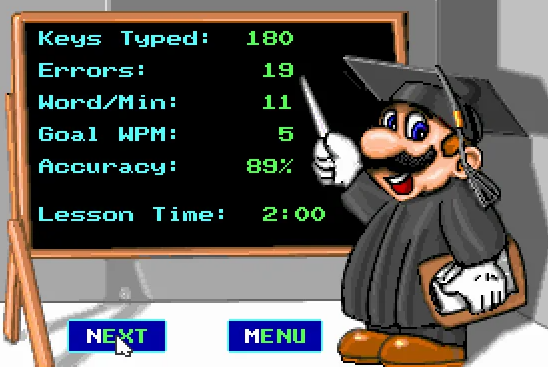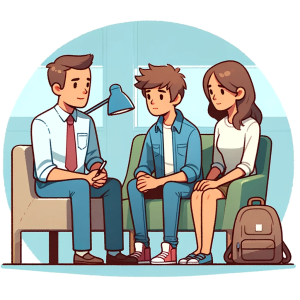
What eSports Can Teach Us About Mental Resilience
Picture this: 72% of professional gamers report physical pain—aching necks, sore backs, stiff wrists—yet they stay locked in, focused, and winning You’d think that kind of discomfort would tank performance. But surprisingly, their mental game—confidence, focus, resilience—remains strong.
Now, swap “professional gamers” with “kids in classrooms.” Suddenly, the research feels a lot closer to home. Kids today also push through their own kinds of strain—academic stress, anxiety, endless screen time. And like gamers, they often show remarkable resilience. The question is: Are we supporting that resilience in healthy ways, or risking long-term burnout?
What the Study Found
Researchers in Saudi Arabia studied 232 professional gamers. The results?
- Pain was the norm: 72% had musculoskeletal pain, most often in the neck (38%), lower back (31%), and wrists (24%).
- Gamers stayed sharp: Despite pain, they scored moderate to high on “flow” (deep focus and immersion) and self-efficacy (belief in their abilities).
- Pain didn’t break focus: Statistically, there was no major drop in mental resilience even when the body was hurting.
In short: the body hurt, but the mind stayed strong.
Why This Matters for Kids
This isn’t just about teenagers chasing eSports glory. The overlap with school psychology and child development is huge.
- Self-regulation in kids: Like gamers, students are constantly balancing stress, fatigue, and the drive to perform. Think of the child pushing through a math test while battling anxiety.
- Screen time strain: Hours of gaming mirror kids’ hours of digital homework, social media, and YouTube. Eye strain, neck pain (“tech neck”), and even carpal tunnel are showing up earlier in young people.
- Resilience vs. risk: Gamers show resilience—but resilience alone doesn’t prevent long-term harm. For kids, ignoring pain (physical or emotional) can mask bigger issues until burnout hits.
The Science of Staying in the Zone
Psychologists call it “flow.” That’s when kids (or gamers) are so immersed in an activity that time flies, distractions fade, and performance peaks. Flow thrives when:
- The challenge is just right—not too easy, not too hard.
- Feedback is immediate.
- Skills and goals match up.
But here’s the catch: pain, stress, or fatigue can disrupt flow. In school, that might look like a child who’s usually engaged suddenly zoning out or struggling to stay on task.
The study also looked at self-efficacy—kids’ belief in their ability to handle challenges. High self-efficacy fuels persistence (“I can do this!”). But ongoing pain or repeated failures can chip away at it.
So how did gamers keep both flow and confidence despite pain? Likely through mental adaptation: focusing harder, regulating emotions, or tuning out discomfort. Kids do this too—sometimes to their own detriment.
The Big Takeaway for Schools and Families
This research shines a light on a tricky balance: kids can appear fine mentally even when they’re struggling physically or emotionally. But ignoring the body (or mind) comes at a cost.
Here are three takeaways for parents and schools:
- Pain and stress don’t always look like problems. A straight-A student or focused gamer may be silently dealing with headaches, back pain, or anxiety. Pay attention to subtle cues—restlessness, irritability, avoidance.
- Resilience is powerful, but not infinite. Kids’ ability to “push through” is impressive, but without support, it risks long-term harm. Just like pro gamers, they need balance—rest, movement, mental health breaks.
- Interventions should be holistic. For gamers, the solution isn’t just better chairs. For kids, it’s not just better math drills. Schools should combine:
- Ergonomics: good posture setups, flexible seating.
- Movement breaks: stretch, walk, breathe.
- Mental health supports: coping strategies, counseling, stress-management tools.
Why Parents and Teachers Should Care Right Now
Think about it:
- The average student spends 7+ hours a day on screens—not far off from competitive gamers.
- 1 in 6 kids report chronic pain symptoms linked to posture and stress.
- Anxiety and depression rates in school-aged kids have climbed steadily over the past decade.
If gamers can mask pain with resilience, what about students? Are we overlooking their hidden struggles just because they “seem fine”?
Practical Tips You Can Use Tomorrow
- Check the setup: At home and in classrooms, small tweaks matter—screen height at eye level, feet flat on the floor, regular stretch breaks.
- Balance digital time: Encourage the “20-20-20 rule”: every 20 minutes, look 20 feet away for 20 seconds.
- Boost self-efficacy: Praise effort, not just results. Help kids see mistakes as part of learning, not failure.
- Talk openly about pain: Normalize saying, “My back hurts” or “This feels overwhelming.” That honesty can prevent silent suffering.
The Call to Action
This study on gamers teaches us something crucial: kids can look engaged and confident while silently battling pain or stress. Schools and families can’t just celebrate resilience—we need to protect it.
That means:
- Advocating for better school mental health resources.
- Designing classrooms that support bodies and minds.
- Listening when kids say, in words or behavior, that something hurts.
Let’s Talk About It 💬
- What’s the biggest mental health challenge you see in schools today?
- How can schools better support students’ emotional well-being?
- What’s one insight from school psychology that changed the way you parent or teach?
Drop your thoughts below or share this post with your network. The more we talk about kids’ hidden struggles, the closer we get to real solutions.



